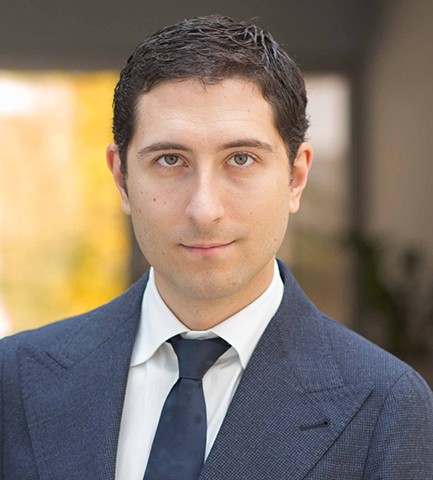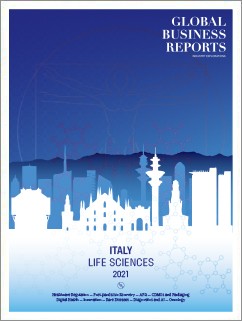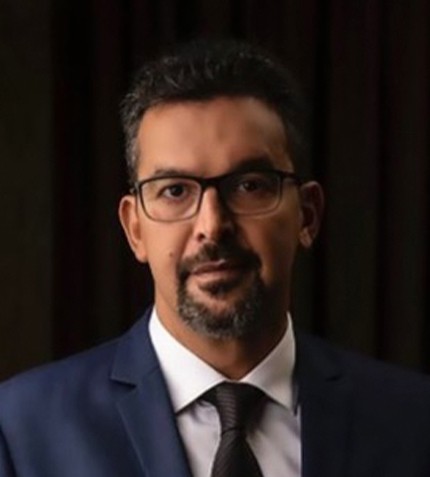
"Our priority is to finalize our proton therapy system by carrying out the “ERHA” project. We currently have an engineering prototype ready to produce the beam, but this needs to be validated for the patient."
RELATED PUBLICATION
Michele Diaferia
CEO, ITEL GROUP
Can you introduce Itel group?
Itel was founded in 1982 and began operations in telecommunications. Thanks to the expertise gained in the technology and innovation sector and in particular the specialized skills in electromagnetic fields and waves, at the end of the 80s, the company evolved towards the medical and clinical engineering sector, specifically in radiology. We began working with General Electric, and other large vendors of radiology equipment such as Philips, Siemens, Hitachi and Toshiba. In 2009, we opened a new company called Itelpharma, dedicated to the production of radiotracers (liquid contrasts used for the diagnosis of tumors). Deriving from our expertise in radiology, we later opened a new company called LinearBeam, a spin-off supported by a €15 million investment from the European Investment Bank. With this company, we entered the med-tech sector, developing a proton linear accelerator - that is a medical device used in proton therapy to treat cancers. Itel Group today consists of three business units: Linear Beam, Itel Pharma, and Itel Diagnostic, together with the Electromagnetic Compatibility lab, the last two representing our equipment and service offering.
Proton therapy is one of the most advanced radiotherapies. What are its advantages?
Traditional radiotherapy works by delivering a dose of electrons or photons to the tumor; however, tumors are typically located in the center of the body, and thus more distanced from the electron input, requiring a higher dose to reach the target. The passage of healthy tissue between the target and the electron is therefore also affected.
In proton therapy, the difference is made in the physics of the particles because 100% of the protons’ energy is delivered 30 cm away from the beam, the doctor deciding precisely where the proton releases most of its energy burst. This point is called the Bragg Peak. The exact target causes minimum harm to nearby tissue, and a lower dosage is required.
Could you tell us more about the market and availability of proton therapy?
Today, there are around 100 centers for proton therapy worldwide. The US and Japan are the biggest markets. In Italy there are currently only two machines in use. What deters entry into this market is the high equipment cost – which can be up to US$150 million/machine.
ITEL, together with our corporate spin-off LinearBeam, is working on “ERHA” project, the world’s first innovative Protontherapy system based on P-Linac machine (a linear accelerator of protons). We are currently at a validation stage of transferring the early prototype to the first oncological institute in Italy. We looked at how we can bring the costs down and realized that, since the 1950s when proton therapy was introduced, the technology based on particle acceleration was not updated. We are the first industry working on a linear accelerator that only produces protons and none of the other particles, which means it is cheaper, faster, and has a purer beam.
Could you tell us about the particularities of producing and delivering radiopharmaceuticals and the potential of nuclear medicine for the future?
Radiopharmaceuticals are peculiar because the products have no shelf life, and they need to be delivered to the patient within 10 hours since being produced. This prohibits abroad shipments and obliges us to have a strategic localized production network. To grow in this business, we need to increase the number of different tracers produced in each facility and we are currently planning the expansion of our radiopharmaceutical network with centers located in different geographical areas. We are also present abroad.
Looking at Itel Diagnostic and EMC Lab, how do you position in the market?
At Itel Diagnostic, we design and implement shielding structures used in MRI rooms, while EMC stands for Electromagnetic Compatibility Test Laboratory. This is a stable market whereby innovations have been dedicated to process improvements.
What are Itel’s priorities for the next 2-3 years?
Our first priority is to finalize our proton therapy system by carrying out the “ERHA” project. We currently have an engineering prototype ready to produce the beam, but this needs to be validated for the patient. We will do so by transferring the technology through an agreement with a public hospital, and we are planning the validation process to obtain the clinical certification on the machine as a medical device. Secondly, we aim to start experimental studies on radiotracers for cancer treatment, implementing R&D activities on new radiopharmaceuticals.











